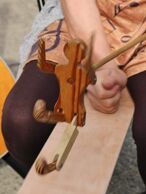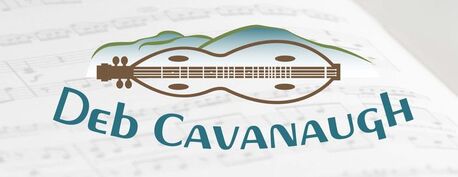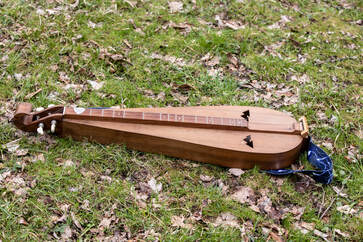 Paul’s loss was a huge blow to all of us, but as with everything else, we had to move on. My children were devastated, especially my youngest who was sixteen years old. He was closer to his dad than to anyone else. I wasn’t able to fill those shoes and didn’t know how to help him through it, though I tried. I offered grief counseling, which he refused, and tried to get other male friends and family to step in for support. In spite of my efforts, he sank deeper and deeper into drugs and depression. He rarely came out of his room, and when he did, he was surly and curt. We no longer hung out the way we once did. Although I knew that some of that was his age, I worried, nonetheless. Then, he found his first love, and I started to be relieved. Maybe this was just what he needed to help him through this hard time. I continued on with my music, getting gigs where I could and stretching out into new instruments and new opportunities. I’m not sure I would ever have played other instruments if not for Dick Kavanaugh. He was the one who first handed me a mandolin and asked me to play it and was always bringing new instruments into the house. We had fiddles, mandolins, banjos, ukuleles, recorders, tin whistles and flutes of all kinds, lots of guitars and more. He told me it was his retirement plan. He would fix them up and resell them when he didn’t want to work any longer. Then one day, he brought home an instrument I’d never seen before. It was a mountain dulcimer. I was amazed to discover that it was a traditional American instrument. How could I not know about this instrument? That’s when I realized that we were not taught American culture in school. I already knew that we were kept ignorant of Native American culture and of much historical truth, being given a very sanitized version of history, but this was Southern Appalachian. Why wasn’t this taught in school? I resolved to learn to play it and equally resolved to teach children about our traditional American musical culture. I started bringing a limberjack to all of my children’s shows and to schools and libraries. I already knew about the limberjack from my childhood. They are also popular among French Canadians, which was my dad’s heritage, and he carved his own which he called a “Dancing Dan.” They’re a wooden puppet with hinged limbs, often at the shoulders, elbows, hips and knees. They’re attached to a stick coming horizontally out of their back. There is a thin pine board that you sit on and rest the limberjack’s feet on the end. As you sing your song, you hit the board with your hand or fist in time to the music, and the limberjack keeps the beat with his feet as his arms and legs flail about in rhythm to the music. It’s always a big hit with folks of all ages. Once I learned to play the dulcimer well enough, I brought that as well, always explaining that it is a traditional instrument. It makes me feel sad that we live in this country, growing up not knowing about our rich traditions. I worked hard at learning the dulcimer. I went to Old Time jams, determined to know more about that music. It’s very hypnotic and just carries you away. I found I could play the same tune for hours and not get bored because it took me to another time and place. However, I’ve never been consistent about practicing and as with everything else, I got lazy and mostly stuck to playing chords. I’ve always looked at my string instruments as backup for my voice. Voice has always been my main instrument and takes precedence over everything else. Unfortunately, that attitude caused me to neglect the other instruments. However, I soon fell in love with the dulcimer. I took a couple of group lessons through the Old Songs organization and a couple of private lessons as well. I bought dulcimer books and went to a dulcimer festival where I heard Sam Edelston play rock and roll on the dulcimer. I was hooked. I never stopped loving rock music. I had just put it on a back burner for a while as I dove into this other world of folk and traditional music. That music is what drove me to learn how to play better and introduced me to a variety of instruments and genres. It was by backing up Old Time and Irish fiddle tunes when I first picked up the guitar that made me learn to play it so quickly. The chord changes were fast, and I learned to recognize the patterns more easily. But now, I was looking at my latest instrument in a different light. The dulcimer is a diatonic instrument, which means that it is tuned to a scale without all the extra notes in between. It’s just do-re-me-fa-sol-la-ti-do. It also only has three strings with two of them usually tuned the same. That makes it a great instrument for beginners. It’s hard to play a wrong note. Many dulcimers have one extra fret, giving its players one note on each of the strings that is not in the scale. I soon learned that I could have other extra frets put in, so I had a 1 ½ fret installed That one more extra fret opened up a whole new world of songs for me. My dulcimer is tuned to D-A-D. Now I had easy access to C natural and F natural both of which are not in the D scale. It seems like a trivial thing to most people, but those two extra notes made a huge difference in what I could play. Soon I was learning how to play chords without the missing notes. If I was playing with someone else, as long as I played some of the notes in the chord, they could provide the notes I didn’t have. As I said earlier, I am a lazy musician, often taking the easy way. One day, after a gig, someone told me that something I had played reminded them of “Norwegian Wood” by the Beatles. I went home and tried to play it by ear. With that one extra fret I’d had added, I found it. I also realized that I wasn’t just playing chords. I was playing the melody. It made me see that there was a lot more to my playing than I had previously allowed myself, and I was newly inspired. I soon learned “Can’t Find My Way Home” then “Wish You Were Here.” For the first time, I understood this instrument in a way I hadn’t with my others. I could play it instinctively. It soon became my favorite, but I still felt limited in what I could play. A few years ago, I went to the used instrument sale at the Old Songs Festival in Altamont, New York. I’ve been going to that festival for many years, have been a volunteer and crew chief, and have bought a few instruments, including a 1935 Martin mandolin at that sale. That year, I saw a dulcimer whose sound holes were in the shape of mountains. It had a larger body than the ones I already had and a beautiful deep tone. As I sat there trying it out, a woman came up and told me that she was the builder of this beautiful instrument. I explained that I loved everything about it and, as usual at this sale, the price was right, but I was used to having the extra 1 ½ fret. She offered to put in the extra fret for me, set up the instrument, restring it and send it to me for the price of shipping. How could I refuse? She told me to show her exactly where I wanted the fret so there would be no confusion. Well, I am often confused and ended up showing her the wrong place. I showed her the 0 ½ placement. Imagine my surprise when I got it back and realized my mistake. I started experimenting with that extra fret, determined to figure it out but missing the 1 ½. I took the instrument to a luthier friend who put the right one in. Then I brought it to another dulcimer festival and asked my friend Sam to show me how to use it effectively. He showed me how to play “Lucy In The Sky With Diamonds” using that 0 ½ fret but cautioning me that it was quite difficult with some big stretches that he thought might be too far for me. I assured him that, luckily, I have very large hands and was determined to learn it. Then, the pandemic hit and shut everything down, including all of my work. I began doing virtual classes but had lost all of my other work and had lots of time on my hands. Within a month I had learned the song and had honed my skills on the dulcimer. My current partner suggested doing a video with all of the cellophane flowers, newspaper taxis, etc. After the video was done, I continued to work hard on the dulcimer. It was the first time since I was a child that I had so much time to practice anything. I relished the opportunity. It is still my favorite instrument and, instead of looking for the next new instrument to take up, I’m content to focus on the ones I have, especially the dulcimer. Interestingly, as much as I love the mountain dulcimer, I still do most of my songwriting on the guitar and piano. I’m not sure why, but I’m not sure it matters.
4 Comments
Jack Brock
12/2/2022 10:33:45 pm
I was recently gifted a dulcimer. I can't play it worth a hoot, but sometimes I just strum it to hear the tones.
Reply
Deb Cavanaugh
1/26/2023 05:15:35 pm
That's great, Jack. It's such a beautiful sound. It's also not terribly difficult to play. I highly recommend trying it. ?❤️?
Reply
Your comment will be posted after it is approved.
Leave a Reply. |
Archives
January 2024
Categories
All
|


 RSS Feed
RSS Feed